Wheel Scout: mobile outdoor and indoor navigationfor limited mobility users
2016-06-29HARRIEHAUSENHLBAUERBettina
HARRIEHAUSEN-MÜHLBAUER Bettina
(Computer Science Department, University of Applied Sciences, Darmstadt D-64295, Germany)
Wheel Scout: mobile outdoor and indoor navigationfor limited mobility users
HARRIEHAUSEN-MÜHLBAUER Bettina
(Computer Science Department, University of Applied Sciences, Darmstadt D-64295, Germany)
Abstract:In order to assist mobility impaired people with finding barrier-free outdoor and indoor routes, a mobile application tool called Wheel Scout is developed, which computes barrier-free routes between two locations on the basis of a personal profile. Wheel Scout’s navigation assistance includes: (a) the marking of barriers on a chosen route, (b) an intelligent computation of a detour in case the chosen route contains barriers, (c) the customization of the app by defining a personal profile(s), (d) the opportunity to include both static as well as temporary barriers, and (e) a high degree of interactivity which enhances the app steadily. Besides commonly known features of navigation systems, the points of interest (POI) feature and their geo dataset are used to add barriers to the maps. For a precise real-time calculation of a user inside of a building, Wheel Scout’s indoor navigation assistance computes the exact position by trilateration of the signal strength of bluetooth transmitters that send UUIDs, which are adapted by including the geo location of the transmitter into them. The ending point of the route is individually chosen by the user and is also returned as a geo location.As the geo locations is in decimal format, the calculation results can be displayed on every digital geographical map. Instead of using special coordinate systems for every building, the geo locations are used which represent the coordinate system of the entire world, thus, the navigation assistance is not only independent of additional coordinate information, but also works indoors as well as outdoors, as outdoor routing is based on the same geoid data. The presented way is innovative to track users even without using satellite communication for the determination of the position.
Keywords:Mobile navigation, calculation of barrier-free walkways, mobile insertion of barriers, bluetooth indoor positioning
1Introduction
Steepramps,stairs,boulderingandotherunevenfootpathsurfacingareofteninsurmountablebarriersforthemobilehandicappedorwheelchairusers.OnthebasisofthegeographicaldataofOpenStreetMap(OSM)[1],wehavedevelopedthemobilenavigationappWheel ScoutwhichenablesmobilityimpairedpeopletonavigatefromAtoBonabarrier-freeroute.
Inadditiontocommonlyknownfeaturesofnavigationsystems,weareusingthepointsofinterest(POI)featureandtheirgeodatasettoaddbarrierstothemaps.Inordertoallowuserstoincludeindoorstartingorendingpointsintheirroutes,weenhancedtheoriginalWheel ScoutappbyRSSIbasedBluetoothLowEnergyIndoorPositioningusinggeographicalcoordinates,callingthenewappWheel Scout Indoor.
Besidesasimpleandlow-costestablishmentofaBluetoothwirelesssensornetwork,anotheradvantageofoursolutionisthelongrangeofthetransmissionpower,whichcanbeadjustedsothatawiderangeindoorpositioningispossible.
Thispaperwilldescribeboththeoutdooraswellastheindoorroutingofourmobileapplications.
2Researchandrelatedwork
Duringourinitialresearch,westartedinvestigatingcommonlyusedGPSnavigationsystemswithregardtotheirfunctionalitiesaswellastheiropeninterfacestoaddindividualenhancements.Wefoundthatrecentdevelopmentsforthecomputingofaroutehaveextendedthechoiceoftransportationtopedestriansbutnoneofthepopularsystems,TomTom[2],Garmin[3],GoogleMaps[4]orOSM[1],currentlysupportfeaturesforwheelchairusersorhandicappedpeople(Fig.1).
Besideslookingatthosepopularnavigationsystems,weinvestigatedseveralwheelchairnavigationandsupportsystemsandfoundthattheyalldifferheavilyintheirfunctionalitiesaswellastheirproductstatus.
Excellenttools,suchasWheelMap[5]focusonbarrier-freebuildingsratherthanroutes,andsystemswithasimilarfocustoours,suchasRollstuhlrouting.de[6]orEasyWheel[7]haven’tlefttheirprototype-statusyetordonotcoverallofthefeaturesthatwehavefocusedon.
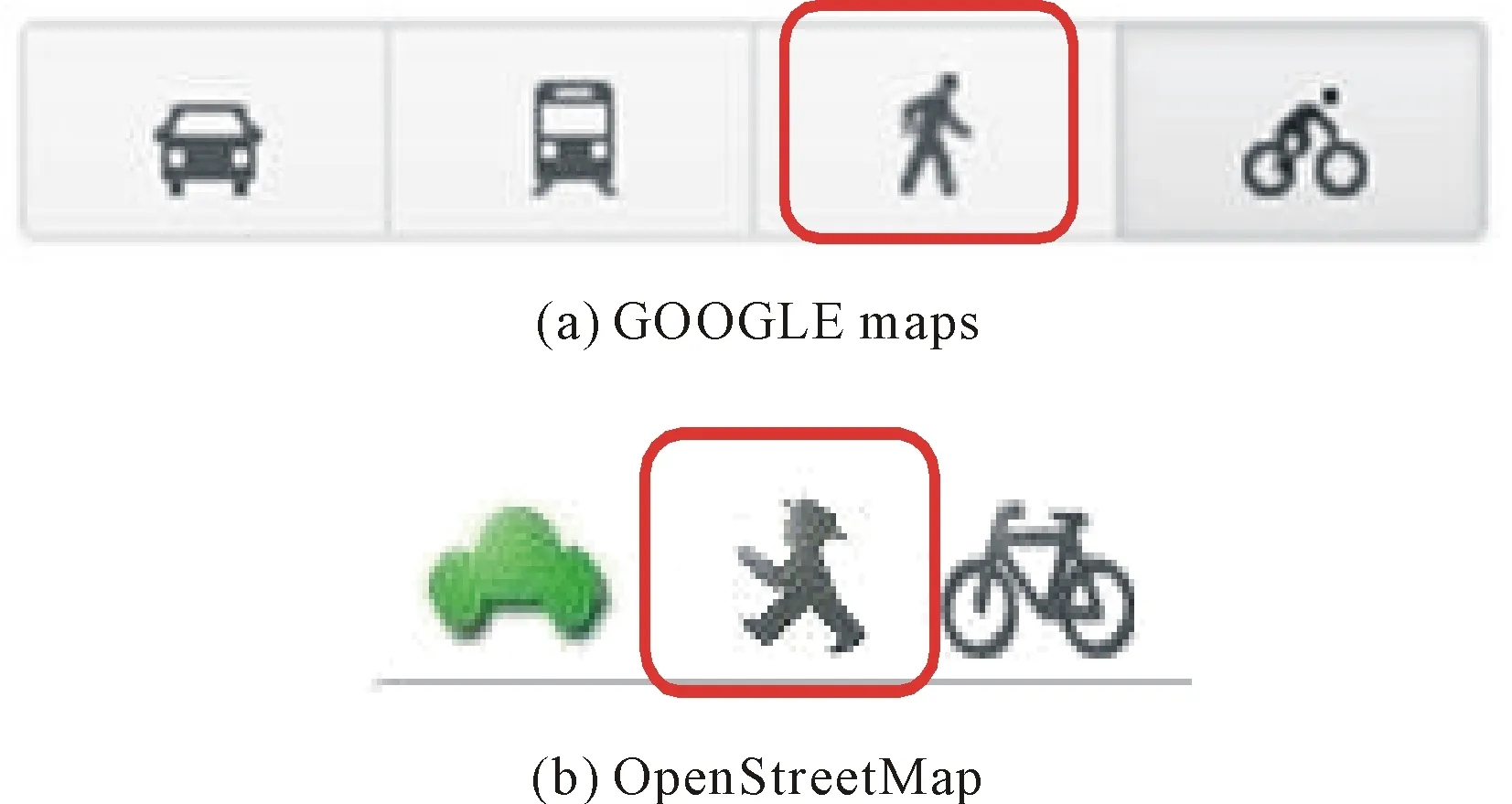
Fig. 1 Choice of pedestrian routing
Afterageneralresearchregardingrelatedwork,weconcentratedourresearchandthefollowingdesignofthesystemondirectcontactandinterviewswithwheelchairusers.Thisledustothedefinitionofthefollowingbarriers,whichcanbeaddedtothemapbytheusersinteractively:stairs,narrowpassages,ramps,andvariousinsurmountablesurfacing.Wehavedevelopedself-explanatoryiconsforallpotentialbarriers(Fig.2).
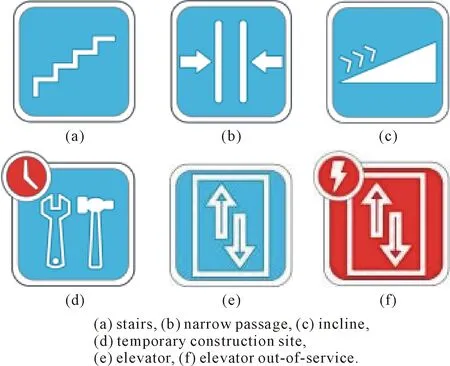
Fig. 2 Icons for barriers
Inadditiontostaticbarriers,userscanalsoaddtemporarybarriers(markedbyaredclocksymbol),suchasfallentreesortemporaryconstructionsites.Presently,thesetemporaryPOIsarebeingautomaticallyremovedfromthemapaftertwodays,unlessanotheruserrenewsitsexistence.
3Design
Weareusingthetrafficlightmetaphortomarktheselectedpathsaccordingtothefeatureofbeingpassableornot,i.e.whethertheyarebarrier-freeornot.Inourapp, “passable”iseitherdefinedbyastandardprofileorcanindividuallybedefinedbytheuser,ascertainbarriersmaycausedifficultiesforsomeusersbutnotothers;i.e.severalmembersinourtestinggroupwereabletoclimbstaircaseswithseveralstairs,whereasotherswouldnotbeabletomountlowsteps.Incasethepathisbarrier-free,itismarkedasagreenroutefromS(start)toZ(goal,German:Ziel) (Fig.3).Apathmarkedyellow(Fig.4,yellowroutemarkedwith“2”)containsbarriers,whichmaycausedifficultiesforcertainpeoplebutnotothers,i.e.theusercanindividuallydecidewhetherornots/hewantstoselectthatroute.Incasetheappdetectsabarrieralongtheshortestroute,thatroutewillbemarkedred(Fig.4,redroutemarkedwith“3”)andabarrier-free(green)alternative(Fig.4,greenroutemarkedwith“1”)willbecomputedautomatically.

Fig. 3 Marking of routes
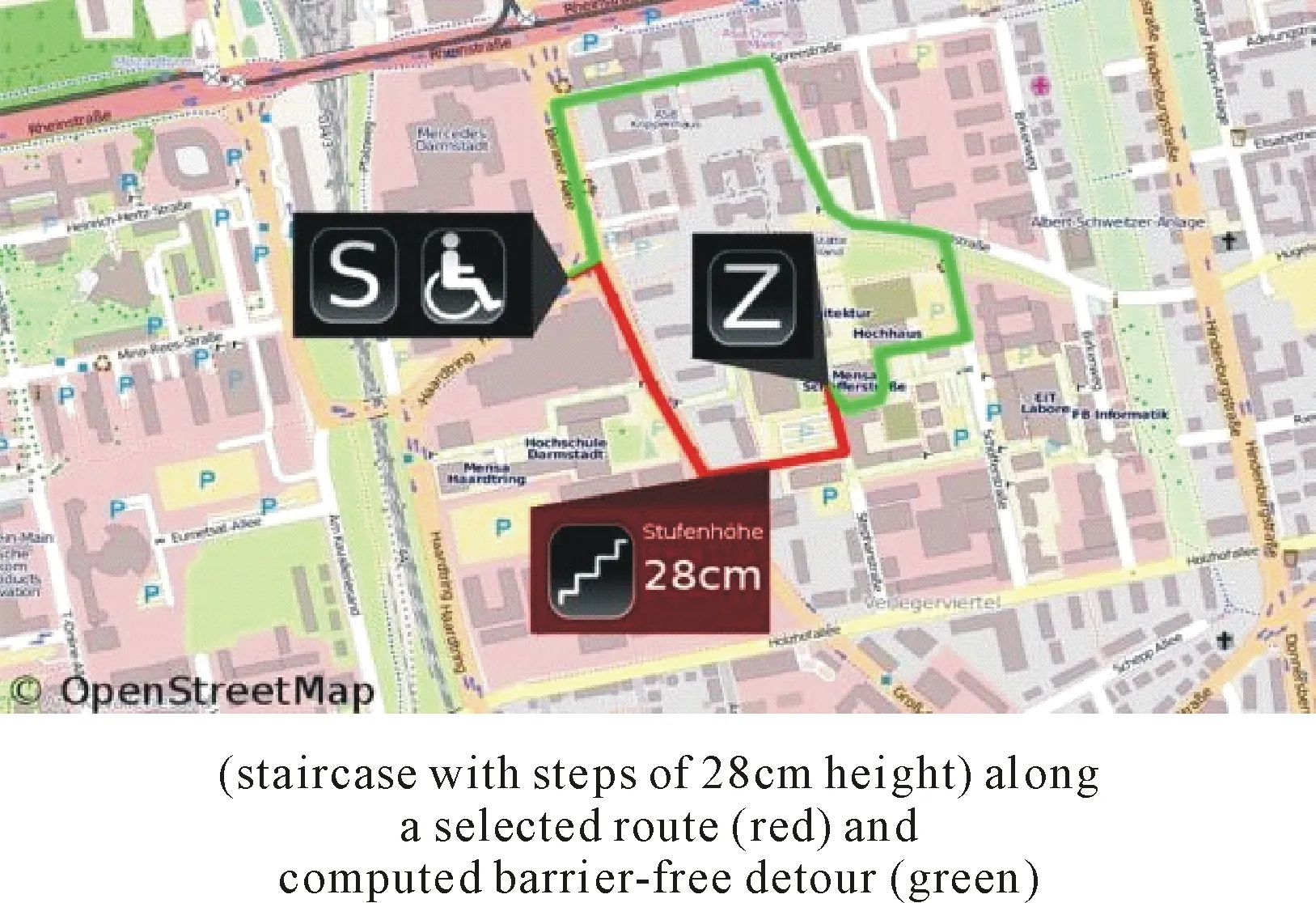
Fig. 4 Display of a barrier
Inallcases,theusercanalwaysselecttoviewthebarrieralongtherouteandwillbeshownthedetailsforthebarrier,whichincludestheicononthetypeofbarrierasfirstinformation,butinadditionalsotextwhichspecifiesthebarrier,suchasthenumberofstairsandtheheightofthestairs.Incaseaphotowasaddedforthebarrierbefore,theusercanalsochoosetoviewthatphoto.Allthisinformationhelpstodecidewhetherornotthebarriercanbesurmountedornot.
Thelook&feeloftheappisdesignedsoitcanbeusedwithoutmajorexplanationsandeachGUIisheldverysimplewithoutoverloadedfunctionalities.Theiconswedevelopedforthebarriersareself-explanatory(Fig.5).Mapsforoutdoornavigationareavailablefromdifferentsources,oneofthembeingOSM,whichwebaseouroutdoorroutingon.AsWheelScout+iscombiningoutdoorandindoornavigation,wefacedthechallengetocreateindoormapsforbuildings,asthesearehardlyavailableforuseinourapp.Wecreatedourownmapmaterialfortheindoornavigationonthebasisoftruetoscaleemergencyplans,whicharefreelyaccessibleineverypublicbuilding(Fig.6).
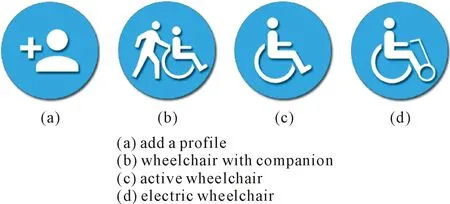
Fig. 5 self-explanatory icons for barriers

Fig. 6 maps based on emergency plan
4Functionalities
4.1Customization
Thetargetusersofourapparemobilityimpairedpeople,whoseabilitiestomastercertainroutesvarytremendously.Notonlydowheelchairsdifferinsize,butabilitiestomasterbarriersdifferamongusersandevendifferwithintheindividualaccordingtodailyconditions.Inordertoadjusttheapptoindividualneedsandlimitation,wehaveincludedthepossibilitytocustomizeoneormoreindividualprofilesbyincludinge.g.thesizeandtypeofthewheelchairandindividuallimitations,suchasthenumberofstairsthatcanbemastered.Foruserswhochoosenottodefinetheirindividualprofile,wehavepredefinedthreestandardprofiles(Fig.7),oneforactivewheelchairusers,thesecondoneforusersofelectricwheelchairs,andthethirdoneforwheelchairuserswhohaveanassistant
.

Fig. 7 Selection of an individual or
4.2TheMarkingofBarriers
Wedistinguishbetweentwotypesofbarriers:permanentandtemporarybarriers.Examplesforpermanentbarriersarestaircasesandramps,temporarybarrierscanbetemporaryconstructionsiteswhichmakeapassageunpassable,fallentreesorsurfaceconditionsduetotemporaryweatherconditions,e.g.icyroads.Onceatemporarybarrierisincludedintothemap,itwillbeautomaticallyremovedaftertwodays,unlessitisre-enteredbythesameoranotheruser.
(1)PermanentBarriers
Therearethreepossibilitiesforpermanentbarrierstoappearintheapp: (a)theyarepredefinedbyOSM, (b)weincludethemintotheOSMmapsbeforedistributionbyusingthePOIfeatureandcurrentGPSpositiontoincludea“pointofinterest”,i.e.oneofourbarriers,or(c)thesecondoptionisperformedbyoneofourusersinteractively,i.e.theappanditscorrectnessofbarrierswillgrowbyusingit.
(2)TemporaryBarriers
Therearetwopossibilitiesfortemporarybarrierstoappearintheapp: (a)theyareinteractivelyincludedbyuserswhentheyseeorexperienceatemporarybarrier,or(b)theyareincludedbytheroadtrafficlicensingdepartmentsofcitieswhichdecidetousetheappasameanstoreceiveanddistributedataabouttemporarybarriers.Temporarybarriersaremarkedbyaredclocksymbol(seeFig.2).
4.3Interactivity
Themarkingofbarriers,andthusthecorrectnessandcompletenessoftheapp,dependstoahighdegreeontheinteractivityoftheusers.Whenexperiencingorseeingapermanentortemporarybarrierthatisnotincludedintheappyet,theusercanincludeitbyspecifyingthetypeofbarrier,moredetailedinformationonthebarrier,ands/hecanoptionallytakeapictureofthebarrier,sofutureuserscandecideuponthepicturewhetherornotthebarrierwillcausedifficulties.
Afterthenewbarrierisaddedtotheapp,itspositionismarkedonthemapwiththecorrespondingicon.Uponselection(touchorroll-over)theadditionaltextualinformationisgiven,aswellasathumbnailimageofthebarrier,incaseapicturewaspreviouslyadded.Inthatcase,theimagecanbeenlarged.
4.4ChoiceofFrequentGoals
Inordertofacilitatethehandlingoftheapp,userscansaveseveralfrequentlyusedgoalsintheirnavigationmenu.Insteadofhavingtotypethelocationseachtime,theycansimplyclickonthelocation(seeFig.8forachoiceofindoorlocations),anditspositionandcoordinatesareautomaticallyincludedinthecalculationoftherouting.

Fig. 8 List of predefined indoor goals
4.5ComputationofIndividualand
Barrier-freeRoutes
ThebasisoftheoutdoorroutecomputationisprovidedbythefreenavigationtoolOSM,whichprovidesmapdataforlocationsworldwide.IndependentofWheel Scout’sfunctionalities,userscanuseOSMtocomputeanindividuallychosenroute,dependingontheirmeansoftransportation(e.g.bycar,bybicycle,byfoot).AsWheel Scoutuserswillneverchoosehighwaysorbigcountryroadswithoutfootpathsalongthesideastheirroutes,thoseareblockedinouralgorithm.WeuseOSM’sinformationonbarriersaswellasouraddedbarrierstocomputertheshortestpossiblepathforeachuserdependingonhisprofile.Incaseanunsurmountablebarrierisdetectedontheshortestpath,thatpathwillbemarkedred,thebarrierswillbedisplayedandabarrier-freedetourwillbecomputedandshownasagreenroute.Incasebarriersaredetectedwhichmaycausedifficulty,buttheusershoulddecidewhetherornottheycanbehandled,therouteswillbedisplayedinyellowcolorandthebarriersaredisplayedwithallinformationthatisavailableinourdatabase.
5Implementation&Technology
5.1HTML5
Inafirststep,westarteddevelopingtheappforAndroidplatforms,butsoonfoundthatthiswasanunacceptablelimitation,asthemobilemarketismuchtoodiverseandcurrentlydominatedbyatleast4 “keyplayers”:Androidphones,Apple’siPhoneswithiOS,RIM’sBlackberryandWindowsPhones.Andapartfromthemobilemarket,wealsowantedtoofferournavigationtooltouserswithoutsmartphonesandtothoseingeneralwhowanttocomputetheirroutesfromtheirhomes.Therefore,wehavechosentodevelopanHTML5websitewhichmakesitpossibletoinformuserswithoutsmartphonesaboutbarriersandtoplanroutesfromhome.Inaddition,itsavedusdevelopmenttime,whichwewouldhavehadtoinvestifwehadchosentodeveloptheappforallavailableplatformsnatively.ByhavingchosenHTML5,alluserscanaccessourapp,eveniftheirsmartphoneisnotnativelysupported,astheycanusethebrowseralternativeinstead.
5.2OpenStreetMap
WehavechosenOSMastheunderlyingmapforouroutdoorrouting,asitsinterfacesenableustoadddatatotheexistingmaps,i.e.ourbarriersas“pointsofinterest”,andwecanaccessitsdata,whichenablesustoextracttheinformationthatweneedtocomputeidealroutesforourindividualwheelchairuser.ThedatathatweextractfromOSMincludeswaysandtheirnodes,aswellasallbarriers,suchassteps,inclines,curbstonesandthenatureoftheground,suchassoilconditions.Allthesedataareneededtocheckwhichwaysandnodesexistandwhichonesarepassableaccordingtotheuser’sprofile.Thewaysandnodesincludefeature-valuepairs,calledtags.Examplesofsuchtagsare:
surface=cobblestone,surface=grass,smoothness=intermediate,incline=*,andwidth=*,includingthegradientoftheinclineinpercentorthewidthofapassageinmeters.
ThetagsareaccessedviatheOverpassAPI[8],whichreturnscustomselectedpartsoftheOSMmapdata.Itactsasadatabaseovertheweb:theclientsendsaquerytotheAPIandgetsbackthedatasetthatcorrespondstothequery.
AnXMLfileisbeingreturnedwhichisloadedbytheserverandusedinthenextprocessingstepinwhichthesinglenodesandwaysfromthefilearetranslatedintoJavaobjectswhichcontaintheIDoftheobjectsandtheirinformationaboutbarriersasakey-value-pattern.Anexampleforanentryforastaircasecouldbehighway=stepsandstep_count= 5for5steps.Whenausersendsaroutecomputationquery,thesedataarecomparedwiththeuser’sprofilebytheroutecomputationalgorithminordertocheckwhichwaysandnodesaresurmountableornot.
5.3GeneratingIndoorMaps
WecreateourownmapsfortheindoorroutingusingtheJavaOpenStreetMapEditor(JOSM)[9].Theinputtothetoolisatruetoscaleemergencyplanofabuildingfloor.ThetoolthengeneratesanXMLfilewherethedifferentbuildingparts,suchasroomsandexits,arerepresentedbydifferentXML-tags.Anexampleofamain-relationoftheindoormodelasOSM-XMLsourcecodeisprovidedinFig.9.
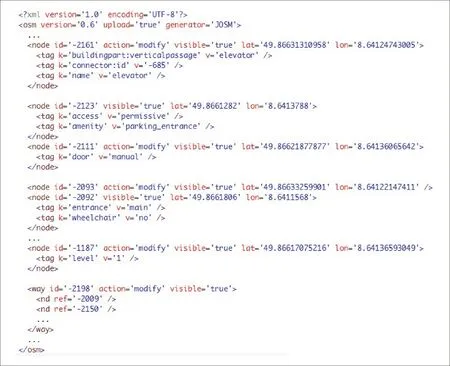
Fig. 9 XML source code of an indoor model
5.4GPS(outdoors)
Theentirecomputationoftheoutdoorroutes,thedetoursandthebarriersisbasedonGPSdatawhichisprovidedbyHTML5’sgeolocationfunctions,whichincludefunctionsforerrorhandling,theavailabilityofthelocationfunctions,andthequeryoftheposition.Whenthelatteriscalledfromthemobiledevice,thecurrentGPSdataissent.
Incasetheappisusedviaabrowser,thepositionisestimatedbymeansofthedevice’sIPaddressandthepossiblyexistingWLANsignal.IncaseswhereonlytheIPaddressisknown,theaccuracyofthepositionisnotveryexactandcanonlybeshownforageneralregion,e.g.metropolitanareaofacity,meaninganaccuracyofapproximately25~150km(Fig.10).
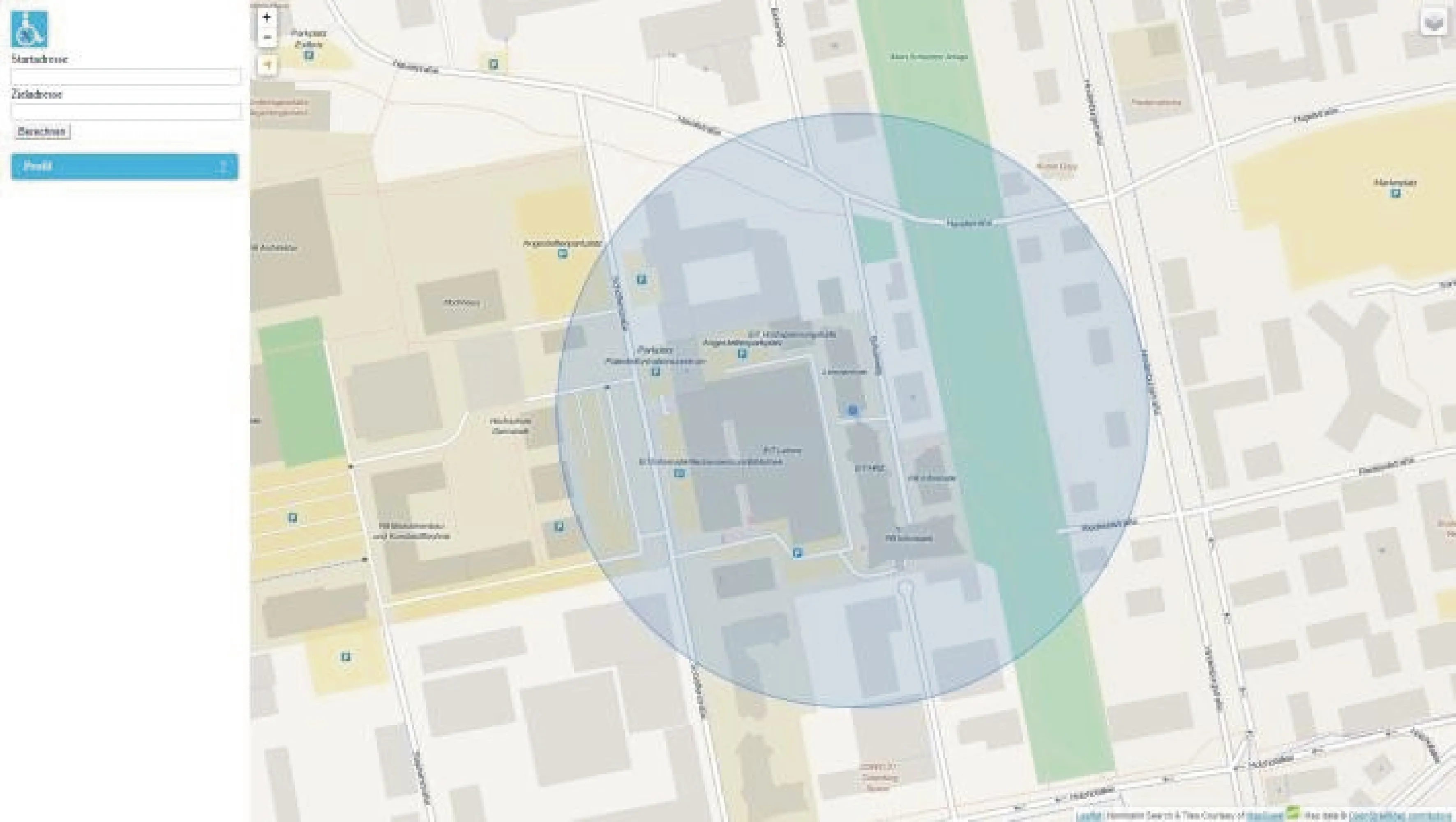
Fig. 10 Marking of the position based on the IP address only
IncaseswherewehaveaWLANsignalknownbyGoogle,anaccuracyofapproximately0.5mistheoreticallypossible.Ourexperienceandtestshaveshownthattheaccuracyinalargecityisusuallybetween30and75m.ButbecauseweonlyneedtoaccessthesepossibilitieswhennoGPSsignalisavailable,thisscenarioislimitedtostationarycomputersinresidentialhomes.Inthesecasesavaguepositioningdoesn’tcauseproblems,astheuserdoesn’tneedtofindorlocatehispositiononamap,asheknowswherehelives,butit’sratherusedtosimplifytheuseofthemap.
Whenusingtheweb-versionofWheel Scout,thebrowserwillaskforpermission,eachtimethepositionisbeingcomputed.Withthemobileversionthisstephappensautomatically,astheappwillbepermanentlyauthorizedtoaccesstheGPSfunctionupondownload.
5.5GeoPosition(indoors)
Forindoortracking,wecouldn’tusethesameGPStechnologythatweusedforouroutdoorrouting,asGPSsignalscannotalwaysbereceivedinsideofabuilding.Instead,weuseBluetoothtransmitters,whichbroadcasttheirUUID,inwhichtheGeopositionofthetransmitterisencoded.TheapplicationusesthethreenearestBluetoothtransmittersandbymeansoftrilateration(Fig. 11)thepositionoftheuserisbeingcalculated.Forreasonsofmaximalpreciseness,thistrilaterationcalculationisperformedmultipletimeseverysecond,sothatanaveragevalue,whichrepresentsthepositionoftheuser,canbecalculated.
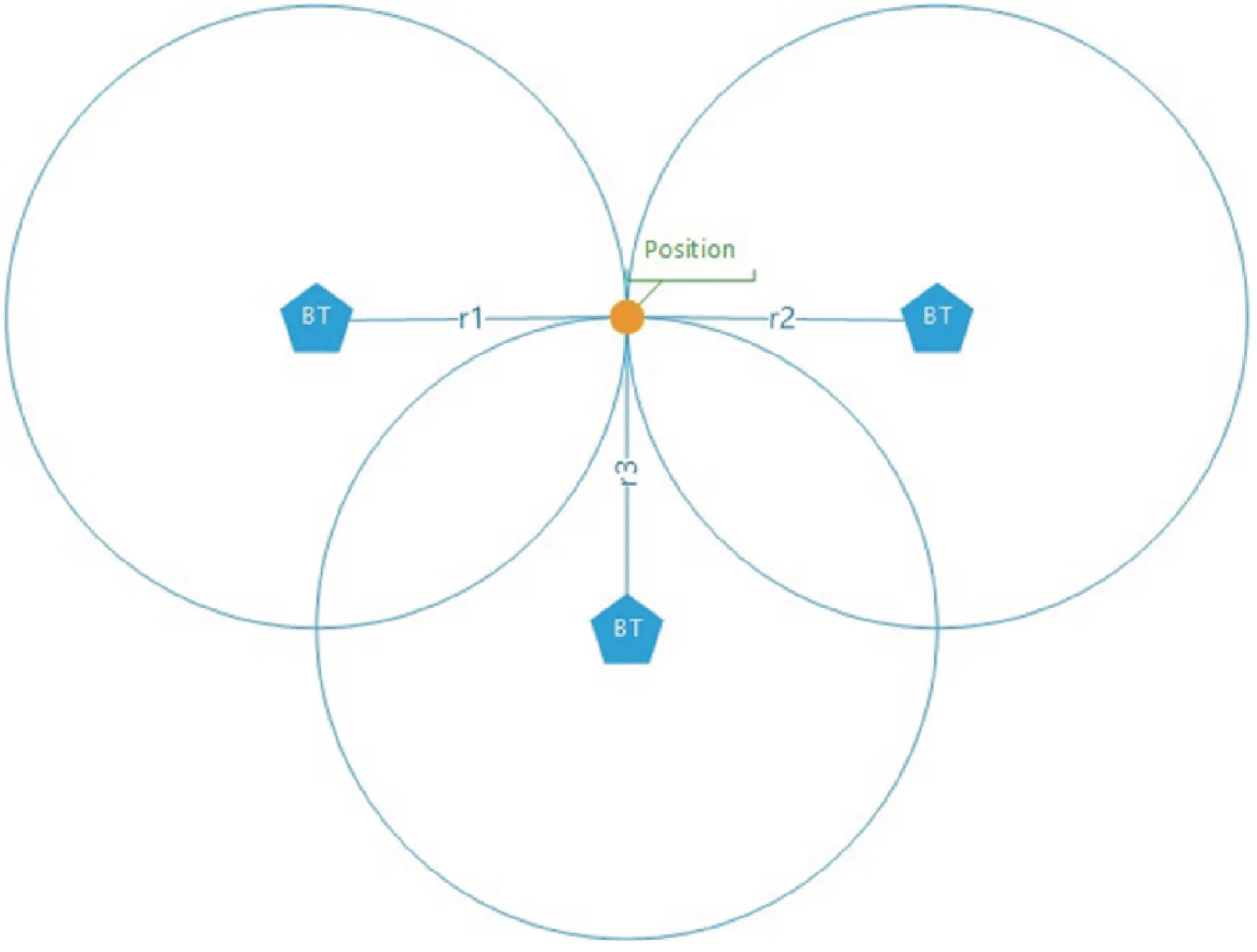
Fig. 11 Calculation of indoor positioning via trilateration
Theaimwastocreateaconnectionbetweentheindoormap,whichisdependingonrealcoordinatesandtheBluetoothtransmitters,whichareplacedinsidetheindoormap.ThereasonforthisisthepossibilitytocalculateGPSgeographicalcoordinatesinsideabuildingwithnoGPSsignal.Thismakesiteasytorealizeafluenttrackingwhilemovingfromtheoutsidetotheinsideofabuilding.
5.6IndoorRouting
Therouteofournavigationiscalculatedonaserver.Forourindoorroutingweusedirectedweightedmultigraphsforeverybuildingasabasisfortherouting.Thegraphsusethedistanceinkilometers(valueoftypeDouble)asweightfortheedges.Thisdistanceiscalculatedfromthegeo-coordinatesofthestart-andend-pointoftheedge.Thegraphneedstobedirectedbecauseinbuildingstherearesomepathsthatmaynotbeaccessedinbothways,likeescalatorsorexits.Thegraphneedstobeamultigraphinordertobeabletosettwoedgesbetweentwovertices,toallowroutinginbothdirections.
TheRoutingHandler[10]readsprofileinformationfromtheroutingrequestandwillthenbuildasubgraphbasedonthedefinedrestrictions.Thesubgraphwillnotcontainpathsthatareinaccessiblefortheuser.
Routingcanonlybedonebetweentwoverticesthatarepartofthegraph,sooneneededstepbeforetheroutingistofindtwoverticesthatareclosetothedesiredstartandendpoint.Forthatreasonasearchonallverticesisdoneandthetwoclosestaredetermined(Fig.12).

Fig. 12 Computing and drawing a route based on a profile
5.7Computationofroutesandbarrierhandling
Themostprominentfeatureofourappisthehandlingofbarriersandtheresultingcomputationanddrawingofabarrier-freeroute.Inordertocheckwhetherthechosenroutecontainsbarriers,wecomparethelistoftagsandvalueswhichexistforeachnodeandwaywiththeindividualprofileoftheuser(shownontheleftofFig.12).Thiswilltelluswhethertherouteispassableandbarrier-free(drawnasagreenroute)ornot.
WeareusingtheDijkstra-algorithm[11]tocomputetheoptimalrouteforourusers.Thisalgorithmcomputestheshortestpathforagivenstart-nodeandone(ormore)target-nodes,inourcasethegoalorlocationtheuserwantstotravelto.InOSMandourdatabaseanintersectioniscallednodeandastreetorpathiscalledway.
First,thestart-andtarget-nodesaredeterminedbyselectingthenodesfromourdatabasewhichareclosesttotheselectedstart-andtarget-nodes.Startingfromthese(database)nodes,thealgorithmwillcheckforthenextnearestnodes.Thesewillbeconnectedbyways.Incasetheconnectingwayisimpassableforwheelchairusersduetobarriers,thisnodewillbeignored.Forallnodesthatcanbereachedonabarrier-freeway,thedistancebetweenthenodeswillbecomputedandstoredforfurthercomputation.
Oncethedistancesbetweenthestartnodeandallreachablenodesarestoredinthereachablenodes,thestartnodewillbemarkedoffas“visited”andwillbeignoreduntilthegoalnodeisreached.Thefollowingstepswillthenbeprocessedinthisorder:
step1Lookforthenodewiththeshortestdistanceandwhichhasn’tbeenvisitedyet.
step2Computethedistancestoallreachablenodesandrecordthedistanceincasenovaluehasbeenenteredyetorthedistanceisshorterthanthepreviousvalue.
step3Returntostep1.untilthenodewiththelowestvalueandwhichhasn’tbeenvisitedyet,isthetarget-node.
Thisprocesswillberepeatedtwiceinordertocomputeagreenandayelloworredpath.Afterfirsttryingtofindagreenpath,theprocesswillberepeatedforayelloworredroute.Theyellowroutewillincludetheuser’sprofiledataforyellowroutes,i.e.barriers,whicharesurmountableforsomeusersorundercertaincircumstances.Incasebarriersaredetectedalongthechosenroute,theywillbebufferedinthedataforthatrouteinordertoberetrievedandincludedintheapplateruponrequestoftheuser.Atthatstage,theusercandecideindividually,whetherthebarriersaresurmountableforhimornot.Whencomputinganddrawingaredroutewedonotincludeprofiledata,asthoseroutesarenotsurmountableunderanycircumstancesandtheappwillalwaysdrawtheshortestroute.
Dependingontheresultofthiscomputationprocess,thefunctionpathdraw(Fig.13)willdrawthecomputedrouteintheappropriatecolor.

Fig. 13 Pathdraw function drawing routes in different colors according to
6Conclusion
Inordertosupportmobilityimpairedpeopleintheirrouting,wehaveinitiallydevelopedtheprototypicalapplicationWheel ScoutforoutdoorroutingonthebasisofthegeographicaldataofOpenStreetMapwhichenablesuserstonavigatefromAtoBonabarrier-freeroute.Inadditiontocommonlyknownfeaturesofnavigationsystems,weareusingthepointsofinterestfeatureandtheirgeodatasettointeractivelyaddbarrierstothemaps.Afterverypromisingfeedbackforourtestusers,weaddedindoorroutingtotheappinordertoallowuserstoincludeindoorstartingorendingpointsintheirroutes,byenhancingtheoriginalWheelScoutappbyRSSIbasedBluetoothLowEnergyIndoorPositioningusinggeographicalcoordinatescallingthenewappWheel Scout Indoor.Besidesasimpleandlow-costestablishmentofaBluetoothwirelesssensornetwork,anotheradvantageofoursolutionisthelongrangeofthetransmissionpower,whichcanbeadjustedsothatawiderangeindoorpositioningispossible.Weareusinggeolocationsforthetrackingofpositionsandtherouting.Thatwaywearenotonlyindependentofspecialcoordinatesystemsfordifferentbuildings,butournavigationassistanceworksindoorsaswellasoutdoors,asoutdoorroutingisbasedonthesamegeoiddata.
Reference
[1]OpenStreetMap[CM/OL].[2015-11-20].http://www.openstreetmap.org.
[2]TomTomNavigationSystem[CM/OL].[2015-11-20].http://www.routes.tomtom.com.
[3]GarminStreetnavigation[CM/OL].[2015-11-20].http://www.garmin.com/de-DE/explore/ontheroad.
[4]GoogleMaps[CM/OL].[2015-11-20].http://www.google.de/mobile/maps.
[5]Wheelmap[CM/OL].[2015-11-20].WheelmapProject.http://wheelmap.org.
[6]DepartmentofGeoinformatics,UniversityofHeidelberg.RollstuhlroutingProject[CM/OL].[2015-11-20].http://www.rollstuhlrouting.de
[7]MENKENSC,SUSSMANNJ,AL-ALIM.et.al.EasyWheel:AMobileSocialNavigationandSupportSystemforWheelchairUsers[C/OL]//2011EighthInternationalConferenceonInformationTechnology:NewGenerations(ITNG).LasVegas,NevadaUSA:IEEE, 2011:859-866[2015-11-20].http://dx.doi.org/10.1109/ITNG.2011.149.
[8]OverpassAPI[EB/OL].[2015-11-20].http://overpass-api.de.
[9]JOSM.JavaOpenStreetMapEditor[EB/OL].[2015-11-20].https://josm.openstreetmap.de.
[10]JGraphTDirectWeightedMultigraph[EB/OL].[2015-11-20].http://jgrapht.org/javadoc/org/jgrapht/graph/DirectedWeightedMultigraph.html.
[11]MORRISJ.DataStructuresandAlgorithms:Dijkstra’sAlgorithm[EB/OL].[2015-11-20].https://www.cs.auckland.ac.nz/software/AlgAnim/dijkstra.html.
[editedby:RayKing]
轮椅侦察:移动受限用户的户内外导航系统
贝蒂娜·哈利豪斯-谬赫鲍尔
(应用科技大学 计算机科学系, 德国 达姆斯达特市 D-64295)
摘要:为帮助移动受限人群找到无障碍的室内外路线,开发一款称为“轮椅侦察”的移动应用程序,基于个人资料,计算两个位置间的无障碍路线。“轮椅侦察”导航辅助系统包括:(a)在选择的路线上标记障碍;(b)当选定的路线上有障碍的情况下智能计算出一个迂回路线;(c)通过定义个人资料定制应用程序;(d)即包含固定障碍也包含临时障碍;(e) 高度的互动性增强了应用程序稳定性。除了那些被导航系统普遍采用的特性,兴趣点(POI)特性及其地理数据集被用以在地图中添加障碍物。在蓝牙发射器发送的信号中纳入地理位置信息,并通过对信号强度的三边测量,以确保“轮椅侦察”室内导航辅助系统可对室内用户完成实时准确地定位。路径终点由用户单独选择,也反映为地理位置。地理位置采用十进制格式,方便将计算结果显示在每个数字地图中。改变为每栋建筑设置特殊坐标系统的做法,使用统一的全球坐标系统描述地理位置,如此以来,导航辅助系统不仅可以摆脱对额外坐标信息的依赖,还能像在室内那样很好地应用于室外,因为,室外路径也基于相同的坐标系统。所给系统的新意在于,即使不使用卫星通信定位,仍可实现用户跟踪。
关键词:移动导航;无障碍人行道计算;移动插入障碍;蓝牙室内定位
doi:10.13682/j.issn.2095-6533.2016.03.002
Document Code:CLC Nubmer: TP391 A Article ID: 2095-6533(2016)03-0015-10
Received on:2016-01-10
Supported by:Centre for Research & Development, University of Applied Sciences, Darmstadt and Association of Invalids, Southern Tirol, Italy
Contributed by:Bettina Harriehausen-Mühlbauer(1960-),PhD, professor, engaged in mobile applications for mobility impaired people and natural language processing. E-mail: bettina.harriehausen@h-da.de
